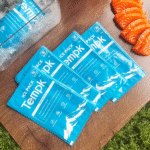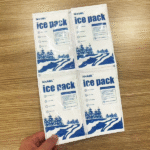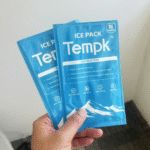Shipping Kit Dry Ice Packs: How to Safely Ship Temperature-Sensitive Goods
In the cold chain logistics industry, maintaining the integrity of temperature-sensitive products during shipping is crucial. Dry ice packs used in shipping kits are a reliable solution for preserving the required temperature of perishable goods. In this article, we will explore the mechanics of shipping kits with dry ice packs, how they improve efficiency, and the best practices for utilizing them to ensure safe delivery. This guide is tailored to help you navigate the complexities of shipping temperature-sensitive items like food, pharmaceuticals, and biological samples.
-
How do dry ice packs work in shipping kits?
-
What are the best practices for shipping with dry ice packs?
-
How can shipping kits with dry ice packs improve efficiency and reduce spoilage?
-
What are the key considerations when choosing a dry ice shipping kit?
How Do Dry Ice Packs Work in Shipping Kits?
Dry ice, the solid form of carbon dioxide (CO₂), sublimates at a temperature of -78.5°C (-109.3°F), providing an effective cooling solution for perishable goods during transit. When dry ice is used in shipping kits, it maintains ultra-low temperatures while sublimating into gas without leaving any liquid residue. This unique feature ensures that no water is left behind, which is a significant advantage over traditional ice or gel packs.
Pro tip: Dry ice sublimates at an average rate of 5-10 pounds every 24 hours, depending on factors like the quantity of dry ice used and the quality of insulation in the shipping kit.
Shipping kits designed for dry ice use ensure that the temperature remains consistently low throughout transit, reducing spoilage and preserving the integrity of the products. By combining dry ice with high-performance insulation, shipping kits can keep items frozen for extended periods, allowing for longer delivery times without compromising quality.
| Item Type | Dry Ice Usage | Benefits |
|---|---|---|
| Food | 5-10 lbs per 24-48 hours | Preserves freshness, prevents thawing |
| Pharmaceuticals | 1-2 lbs per 24 hours | Ensures efficacy and stability |
| Biological Samples | 3-5 lbs per 48 hours | Maintains sample integrity during transport |
Best Practices for Shipping with Dry Ice Packs
To maximize the effectiveness of dry ice packs in shipping kits, certain practices should be followed. These practices not only enhance cooling performance but also ensure compliance with safety regulations.
-
Calculate the Right Amount of Dry Ice: For every 24-48 hours of transit, use approximately 1-2 pounds of dry ice. Consider the insulation properties of the shipping kit and adjust the amount accordingly.
-
Use Insulated Containers: High-quality insulated containers are essential for keeping dry ice from sublimating too quickly. They help maintain consistent temperatures and reduce the overall amount of dry ice needed.
-
Seal Containers Tightly: Ensure that shipping containers are sealed properly to retain the cold air. However, ensure the containers are not airtight, as carbon dioxide gas needs to escape to prevent pressure buildup.
-
Ensure Adequate Ventilation: Make sure the container has sufficient ventilation holes to allow the carbon dioxide gas to escape safely, preventing potential risks such as container rupture.
How Shipping Kits Improve Efficiency and Reduce Spoilage
Shipping kits with dry ice packs not only help maintain the required temperatures but also improve logistics efficiency in the following ways:
-
Faster Delivery Times: Dry ice shipping kits keep the contents at the required temperature, allowing for faster delivery times without compromising product quality. This is especially important for industries like pharmaceuticals and food, where timely delivery is critical.
-
Reduced Spoilage and Waste: By maintaining optimal temperatures, dry ice helps reduce spoilage and waste, especially for temperature-sensitive items like seafood, meats, and medicines.
-
Cost Efficiency: Efficient insulation and careful dry ice usage reduce the total amount needed for each shipment, ultimately saving money while maintaining temperature control.
Real-life example: A pharmaceutical distributor saw a 30% reduction in product spoilage after switching to dry ice shipping kits with insulated containers, improving customer satisfaction and reducing losses.
Key Considerations When Choosing a Dry Ice Shipping Kit
When selecting a dry ice shipping kit, several factors must be taken into account to ensure that the solution fits your specific needs. These factors include:
-
Temperature Requirements: Ensure that the shipping kit can maintain the necessary temperature range for your products. For instance, dry ice can maintain temperatures for up to 48 hours, but certain goods may need more stringent cooling solutions.
-
Insulation Quality: The better the insulation, the longer the dry ice will last. Good insulation also helps optimize the cooling effect, reducing the overall amount of dry ice needed.
-
Size and Fit: Choose a shipping kit that fits your shipment size. It should provide enough space for both the dry ice and the products, while still ensuring a secure fit to prevent temperature fluctuations.
-
Regulatory Compliance: Dry ice shipping kits must meet regulatory guidelines such as those set by the Department of Transportation (DOT) and the International Air Transport Association (IATA). Compliance with these regulations is crucial for safe and legal transport.
Important tip: Always check the specific regulations for dry ice shipping in your destination country, as international rules may vary.
2025 Trends in Dry Ice Shipping Kits
As we approach 2025, several trends and innovations are shaping the future of dry ice shipping kits. The industry is evolving to meet the growing demand for fast, efficient, and sustainable cold chain solutions.
-
Smart Shipping Kits: Temperature monitoring sensors are being integrated into shipping kits to provide real-time tracking of the shipment’s temperature, ensuring that products stay within the desired range throughout transit.
-
Eco-friendly Packaging: With sustainability becoming a top priority, many companies are moving towards biodegradable and recyclable materials for their dry ice shipping kits, reducing the environmental impact of cold chain logistics.
Latest Developments Overview:
-
AI-driven Temperature Management: New temperature management systems use artificial intelligence to track and adjust the cooling process, improving efficiency.
-
Sustainable Dry Ice Production: Many manufacturers are focusing on creating CO₂ from industrial processes, reducing the carbon footprint of dry ice production.
-
Hybrid Packaging Solutions: Combining dry ice with phase change materials (PCMs) has been shown to extend cooling durations while minimizing CO₂ use.
Market Insights:
As global demand for reliable cold chain logistics continues to grow, particularly in the pharmaceutical, food, and biotechnology industries, the role of dry ice in shipping kits is becoming increasingly important. Innovations in packaging materials, temperature monitoring, and sustainable solutions will continue to shape the market well into 2025 and beyond.
Frequently Asked Questions
Q1: How much dry ice is needed to ship seafood?
For seafood, 5-10 pounds of dry ice per 24-48 hours of transit is recommended. Always factor in the insulation quality of the shipping kit for better temperature management.
Q2: Can dry ice be used for shipping electronics?
Yes, dry ice is safe for shipping electronics, as long as the shipping kit is properly insulated to prevent condensation that could damage the devices.
Conclusion and Suggestions
Shipping kits with dry ice packs are an indispensable part of cold chain logistics, ensuring the safe transport of temperature-sensitive goods. By following best practices, selecting the right dry ice shipping kit, and staying up to date with industry trends, you can significantly improve the quality of your shipments while reducing costs and spoilage.
Action suggestion: If you’re looking to upgrade your cold chain logistics, consider investing in dry ice shipping kits and consult with industry experts to find the best solutions tailored to your needs.
About Tempk
At Tempk, we specialize in providing innovative cold chain logistics solutions, including advanced dry ice shipping kits. Our solutions are designed to maintain the integrity of your temperature-sensitive products, using the latest technology and sustainable materials.
Call to Action: Reach out to Tempk today to find the perfect shipping kit for your cold chain needs!
























